Gardening: Small choices make a big difference
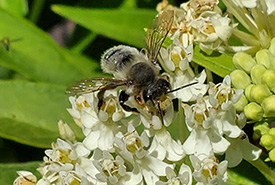
Megachile (leafcutter, mortar, and resin) bee on swamp milkweed (Photo by Sarah Ludlow)
Well, it is that time of year again — when the hope of spring and warmer temperatures is edging ever closer, especially in my home province of Saskatchewan. It is also the time when I begin starting my seeds to plant in my garden this...
Collaborating for conservation
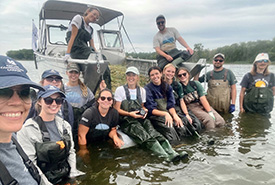
The cutting crew, comprised of staff from NCC, Georgian Bay Forever, Parks Canada, and the Severn Sound Environmental Association (Photo by Carolyn Davies/NCC Staff)
The natural world really is incredible. Spending time in it is a continual process of discovery, which is great for someone like me who is a life-long learner. For the past year and half at the Nature Conservancy of Canada (NCC), I’ve had...
Weeding out trouble: A summer as an invasive species sleuth
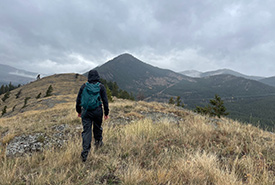
Hiking on the ridge to check on biocontrol releases (Photo by NCC)
This summer I had the incredible opportunity to work as an invasive species technician with the Nature Conservancy of Canada (NCC) in the Waterton and Castle Crowsnest Natural Area. This remarkable area is known for its diverse landscapes and...
The swamp’s unlikely hero: a beetle
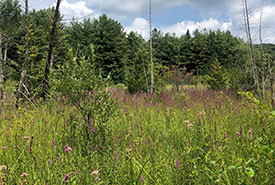
Purple loosestrife at Beaver Meadow wetland, ON. (Photo by Jen Arbeider/NCC staff)
When I first started as a conservation technician with the Nature Conservancy of Canada (NCC) in May, I was very excited to observe unique species of plants and wildlife, as well as work in a diversity of habitats and make a difference in...
Stanley the stowaway
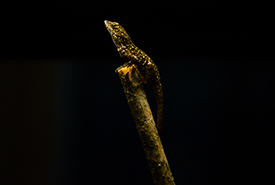
Stanely on a branch (Photo by Andrea Moreau)
It was past midnight, and I was just wrapping up my school work for the day when I saw it: a tiny brown lizard, only slightly larger than my thumb nail. The lizard was so small (and I was so tired) that I had to do a doubletake; but there it was,...
No easy task: Ayla Peacock on battling invasive species in the Crown of the Continent
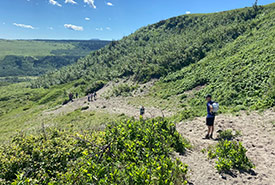
Getting to Conservation Volunteers site often involves a scenic hike through the land. Blind Canyon, AB (Photo by NCC)
I’m lucky enough to work in within the Crown of the Continent, a region straddling the continental divide in the Rocky Mountains that covers corners of Montana, Alberta and British Columbia. This unique landscape features magnificent and...
Fighting phragmites on Georgian Bay
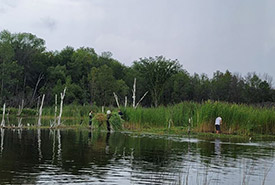
NCC staff and volunteers working to control phragmites on Georgian Bay, ON (Photo by Sara Meyer/NCC staff)
When I started with the Nature Conservancy of Canada (NCC) in the spring of 2022, I had limited knowledge of the invasive species called phragmites (phrag, as many in the conservation circle call it), and also known as common reed, the immense...
Tree girdling
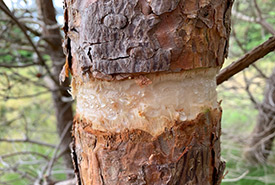
Scotch pine girdling (Photo by Chirathi Wijekulathilake/NCC staff)
I am a conservation intern at the Nature Conservancy Canada (NCC) in Newfoundland and Labrador, and in this role I often have family and friends asking me what NCC is, what their role is in the conservation community, and most commonly, what my...
Conservation notes from another northern nation
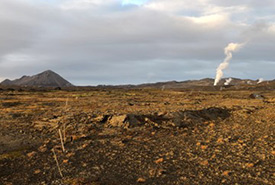
Sparsely vegetated volcanic landscape east of Lake Myvatn, North Iceland, with geothermal steam in background (Photo by Paula Noel/NCC staff)
I was fortunate to have the opportunity to travel in Iceland this fall, a country that, despite its relatively mild climate, is situated further north than Iqaluit! Thanks to the warming influence of the Gulf Stream current, Iceland temperatures...
A "knot" so regular day in the garden
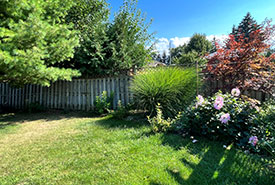
The back-garden (photo by Luca Brunato)
Back in late spring of 2020, I went back to my hometown of Niagara-on-the-Lake to help my father with the garden. This is an annual practice where I come over, and we spend the entire day weeding, pruning, shaping and landscaping our garden areas...

